Falling in Love With Problems Worth Solving: Tackling the Climate Crisis With Design Thinking
As sustainability tops the agenda for many global companies, it’s no secret that green business is good business. In response to the climate crisis, the UN Sustainable Development Goals are a call to action for governments and business leaders globally.
At Hult, we recognize the fundamental role business must play in building a sustainable future. There’s an urgent need for innovative, creative, and ethical leadership to navigate tomorrow’s business challenges. Through the integration of design thinking principles into our curriculum, we’re helping to foster this new generation of creative change-makers who are ready to make a meaningful impact on business and society.
Harnessing design thinking for innovation
Design thinking quite literally means thinking like a designer. It involves using creative thinking to approach complex customer problems from different angles—truly thinking outside of the box. It is a human-centered, collaborative, and iterative approach to problem-solving.
Design Thinking for Innovation, a core course for master’s students at Hult, harnesses the skill of creative problem-solving for world-changing impact. Led by Dr. Henrik Totterman, the course is structured to guide students through a comprehensive learning journey, starting with understanding the fundamentals of design thinking and progressing toward its practical application in developing innovative solutions.
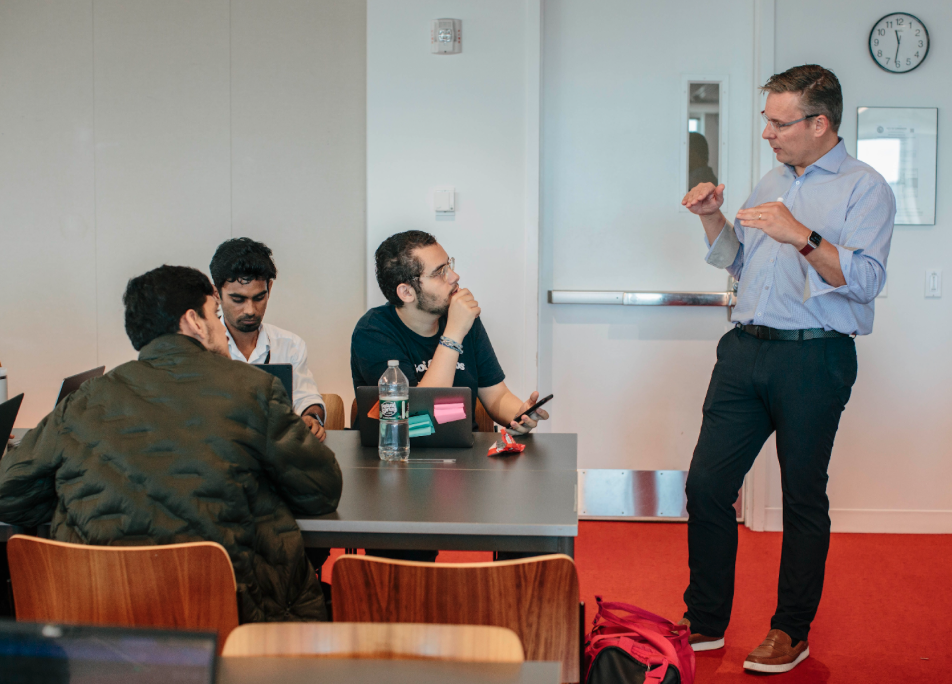

Each session delves into key topics within the design thinking methodology, such as understanding and truly empathizing with customer needs, mapping the customer journey, undertaking thorough market research, product prototyping, and user testing. Through a hands-on learning approach, students engage in team assignments that require them to apply design thinking principles to real-world challenges.
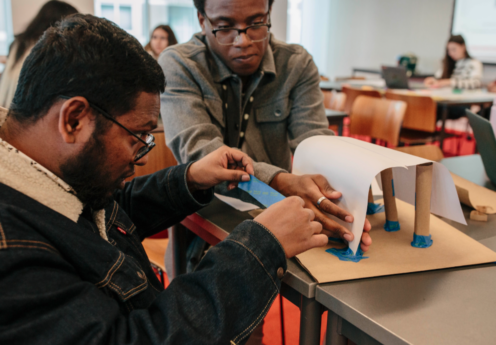

The course aims to cultivate the ability to identify business challenges and apply creative solutions using the principles of design thinking. The focus is always on human-centric innovation, using design thinking to reframe problems, come up with alternatives, and iterate toward improved solutions.
“For me, design thinking is the process of developing a truly customer-centric solution to a problem, while always questioning how the solution can be even better.”
Linus Horn, MIB Class of 2024, Fooga team member
Design thinking in action: The Greener Business Challenge
The Greener Business Challenge is a team-based project at the heart of Dr. Totterman’s course, worth 30% of the final grade. The challenge tasks students with accelerating the green transition, using the principles of design thinking to create and pitch sustainable business solutions that address some of today’s most pressing environmental concerns, aligning with the UN Sustainable Development Goals.
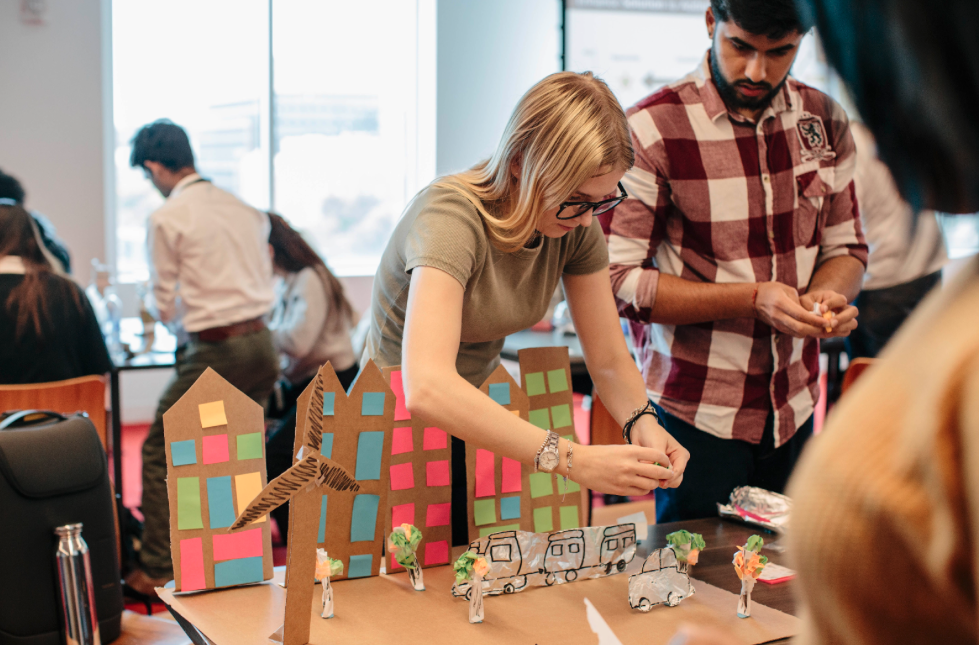

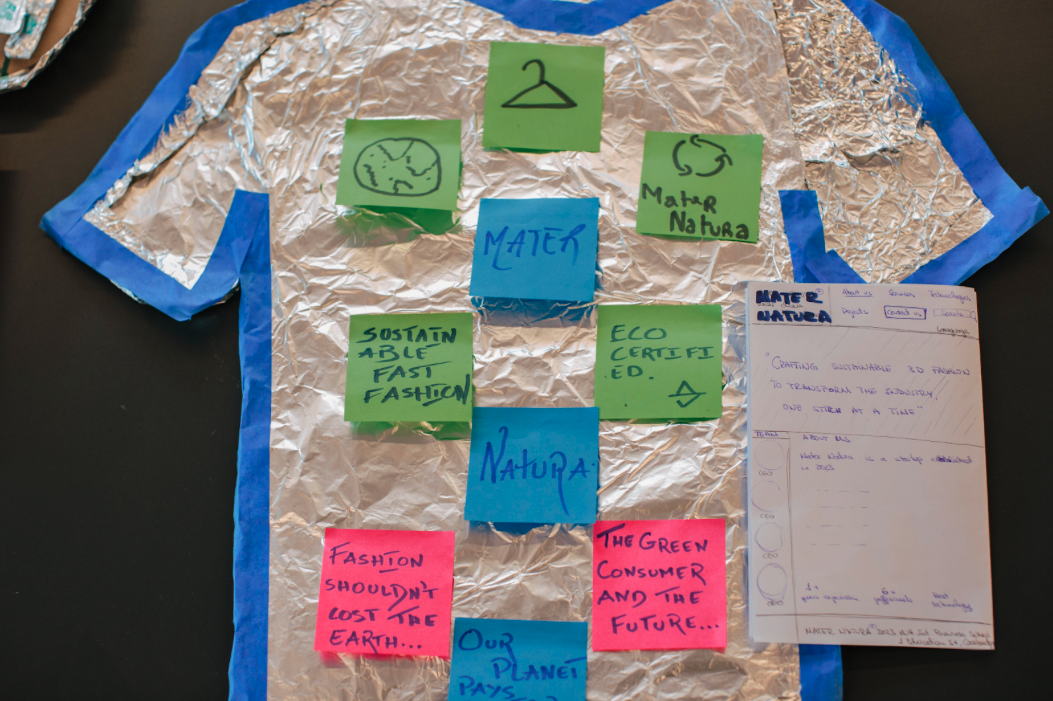

Teams are responsible for undertaking market research, prototyping their ideas, and demonstrating the viability and scalability of their proposed venture. Along with an executive summary and explainer video, teams also needed to produce a business development pitch deck and present it to multiple executives.
Sometimes we want to hurry to find a solution to a problem when we don’t really understand the problem at all. We need to invest time in trying to deeply understand the problem to be able to come up with a solution.
Juan Fernández Fernández, MIB Class of 2024, Build Green team member
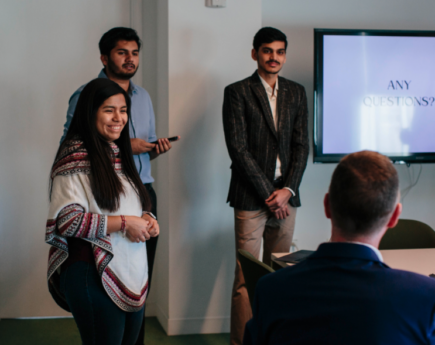

Student-ideated solutions ranged from businesses designed to tackle plastic waste and move towards a circular economy, to 3D-printed fashion and AI-assisted cosmetic purchasing. By identifying environmental issues and crafting solutions balancing viability and ecological stewardship, this project develops the core competencies needed for tomorrow’s ethical businesspeople.
Here’s an overview of just three unique, student-scoped concepts:
Fooga: Redefining Food Sustainability
The problem: Excessive food consumption leads to massive waste, with the US alone wasting an estimated 40% of food.
The solution: Fooga offers high-quality excess food at reduced prices to low-income households while composting perishables to create nutrient-rich soil for local farmers. This innovative approach not only reduces waste but also promotes community well-being.
Watch the video to see Fooga in action and understand the design thinking process behind their solution:
EcoGlam: Revolutionizing the Cosmetics Industry
The problem: The cosmetics industry generates substantial waste through single-use packaging.
The solution: EcoGlam introduces cosmetic refill stations, in-store wellness experiences, and a gamified app to incentivize environmentally conscious consumers. By promoting sustainability and consumer engagement, EcoGlam sets a new standard for eco-friendly beauty practices.
See how the EcoGlam concept works:
Build Green: Shaping the Future of Sustainable Construction
The problem: Buildings account for a significant portion of global carbon emissions and energy consumption, yet sustainable materials remain costly.
The solution: Build Green leverages technology to reduce household energy consumption and innovative designs to drive sustainable new home construction and renovations. Through strategic alliances and tech-focused solutions, Build Green paves the way for eco-conscious living.
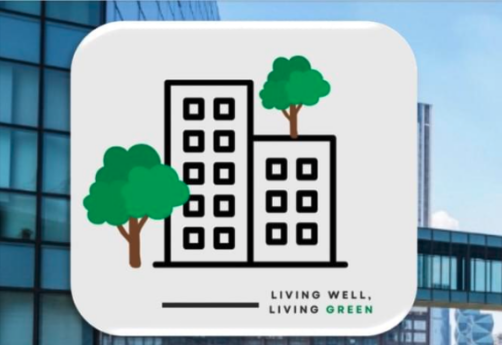

“One of my biggest takeaways from the course is that we should use our creativity not just to create a profitable business but also one that gives back to the community.
Maria Camila Aguirre Giraldo, MIB Class of 2024, Fooga team member
At Hult, we’re committed to nurturing business leaders who are not only prepared to navigate the complexities of the global landscape but are also equipped to drive positive change in both business and society. We couldn’t be more proud to showcase the achievements of Dr. Totterman’s master’s students, as just a small example of what Hultians can achieve if they quite literally put their minds to it.
“To ‘fall in love with the problem’ before attempting to find a solution, is a mantra that’s been ingrained in me ever since I had the privilege of being in Dr. Totterman’s class.”
Firas Bidawi, MIB Class of 2024, EcoGlam team member
Design thinking is more than just a methodology; it is a philosophy that fosters innovation by placing the human experience at the center of problem-solving. So, can we think our way out of the climate crisis? The collective creative brainpower of a Hult classroom suggests we can.


